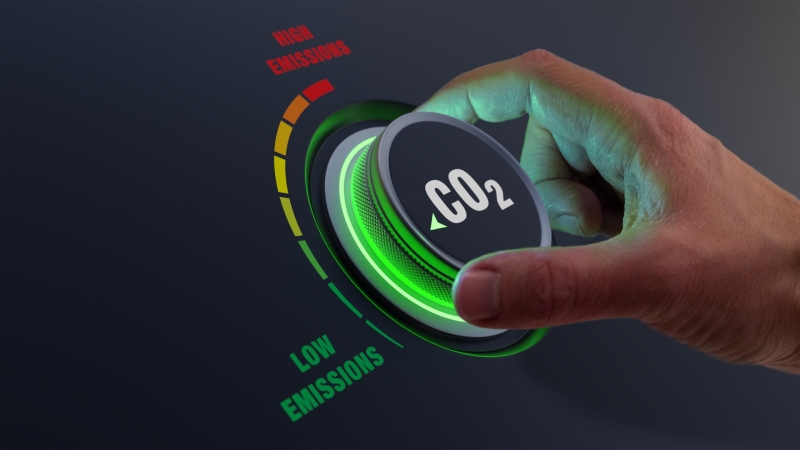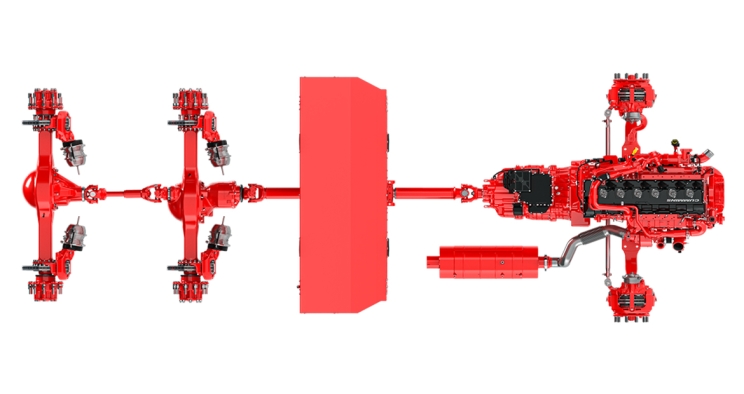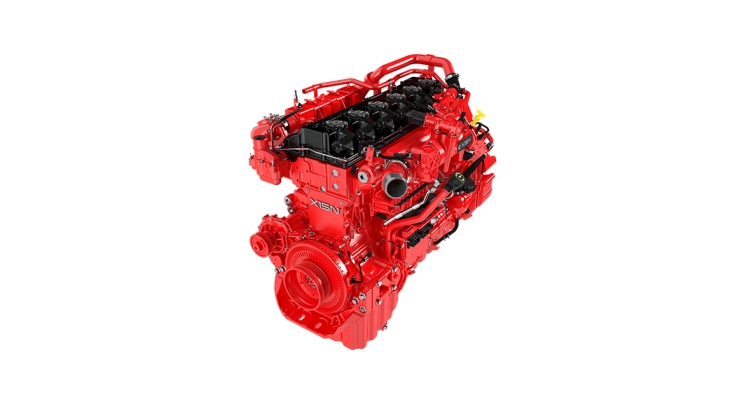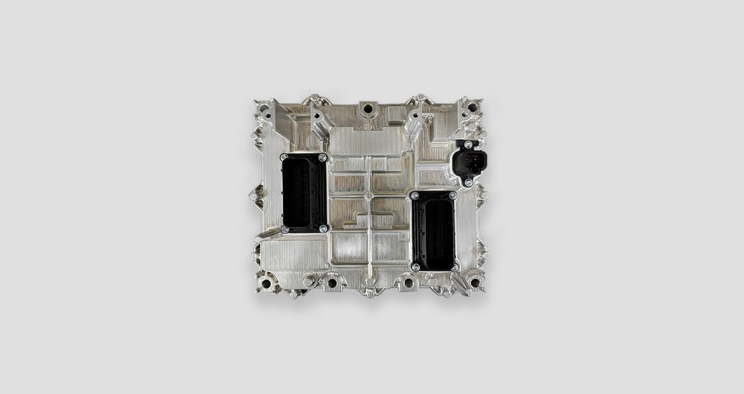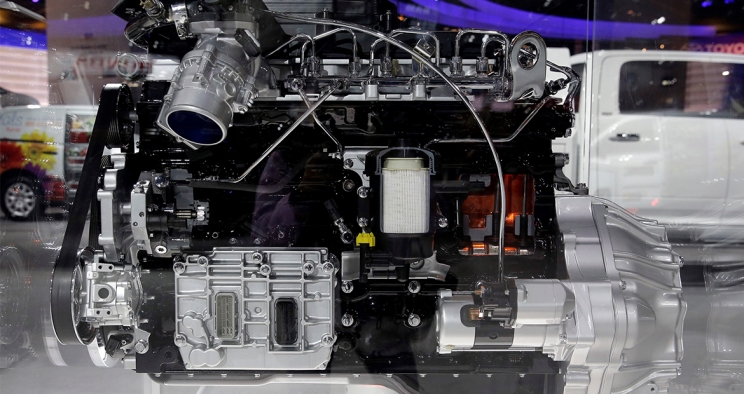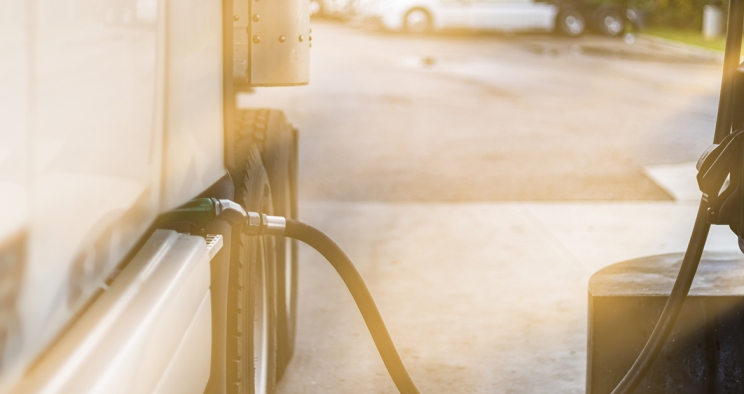
Interested in decarbonizing your operations? Check out how different fuels can play a role in your journey to zero emissions.
Power from alternative fuels to decarbonize your business
Biodiesel, renewable diesel, natural gas, renewable natural gas, hydrogen, and more.
Alternative fuels play a key role in decarbonizing your operations. Whether you are in the marine, mining, rail or power generation business, your decarbonization journey will likely include a selection of these alternative fuels.
Explore the fuels ranging from low-carbon to zero-carbon emissions.

Low carbon fuels
- Renewable diesel
- Biodiesel blends
- Hydrogen, methanol,
ammonia1

Carbon-neutral fuels
- RNG2
- Methanol3

Zero-carbon fuels
- Hydrogen4
- Ammonia5
This analysis is conducted on a well-to-wheel basis.
1 When produced using fossil fuels with carbon capture and storage
2 When produced with select feedstocks. Can also be carbon-negative based on feedstock used.
3 When produced with feedstocks containing waste CO2 resources
4 When produced by electrolysis and renewable electricity
5 When produced by renewable electricity and green hydrogen as the source
Low-carbon fuels
Low-carbon fuels are those that emit less carbon than traditional alternatives. In most cases, diesel is the incumbent fuel used in comparison.
Biodiesel and renewable diesel are two of the common low-carbon fuels. Biodiesel is produced from plants and other organic matter; thus, has lower carbon intensity. It is most frequently blended with regular diesel.
As the proportion of biodiesel increases within the blend, the carbon intensity of the fuel decreases. Renewable diesel, or HVO, is made from animal fats, and from crops such as soy and rapeseed.
In many engines, renewable diesel can be used as a drop-in replacement for diesel. Renewable diesel’s CO2 emissions are highly dependent on the feedstock used. Often, this results in well-to-tank emissions above zero, though dramatically lower than diesel.
The majority of Cummins light-duty, medium-duty, heavy-duty and high-horsepower engines are compliant with unblended paraffinic fuels meeting EN15940 standards, as well as specific blends of biodiesel. Contact your Cummins distributor for the most up-to-date fluids manual for a complete listing of Cummins engines and allowable low-carbon fuels.
Carbon-neutral fuels
Carbon-neutral fuels are those that do not increase or decrease the amount of carbon in the atmosphere through their life-cycle. When burned, carbon-neutral fuels emit carbon, but this is equivalent to the carbon absorbed from atmosphere during their production.
Renewable natural gas (RNG) and methanol are two examples of carbon-neutral fuels.
RNG is chemically almost identical to conventional natural gas; yet it is carbon-neutral. This is because RNG is obtained by fermenting organic waste such as sewage sludge or animal manure. Depending on the energy source, the carbon intensity of RNG can even be sub-zero.
Methanol becomes a carbon-neutral fuel, well-to-wheel, only when it is produced using feedstock with enough recycled carbon to offset the carbon emitted. In this case, when methanol is burned, the carbon originating from its production source is returned to the atmosphere. When methanol is produced using natural gas, it is considered a low-carbon fuel.
Cummins offers a range of natural gas engines for on-highway and select industrial applications. Contact your Cummins distributor for more information.
Zero-carbon fuels
Zero-carbon fuels are those that do not release carbon at the time of usage. Hydrogen is an increasingly popular zero-carbon fuel.
Hydrogen can produce power through engines and fuel cells. Hydrogen-fueled fuel cells produce no emissions at all besides water vapor. Hydrogen fueled engines do not produce carbon emissions from the fuel itself either. They do produce trace amounts of carbon due to the lubricants involved in engines’ combustion cycle.
When hydrogen is produced using renewable electricity, the resulting fuel, green hydrogen, can be a zero-carbon fuel well-to-wheel.
Ammonia does not include carbon atoms and its combustion does not result in carbon emissions from a tank-to-wheel perspective. Ammonia is already being used in industrial applications. Its use in industrial mobility can be more focused to being a shipping fuel.
Cummins continues to advance the development of hydrogen engines, as well as scale the hydrogen economy through Accelera.
